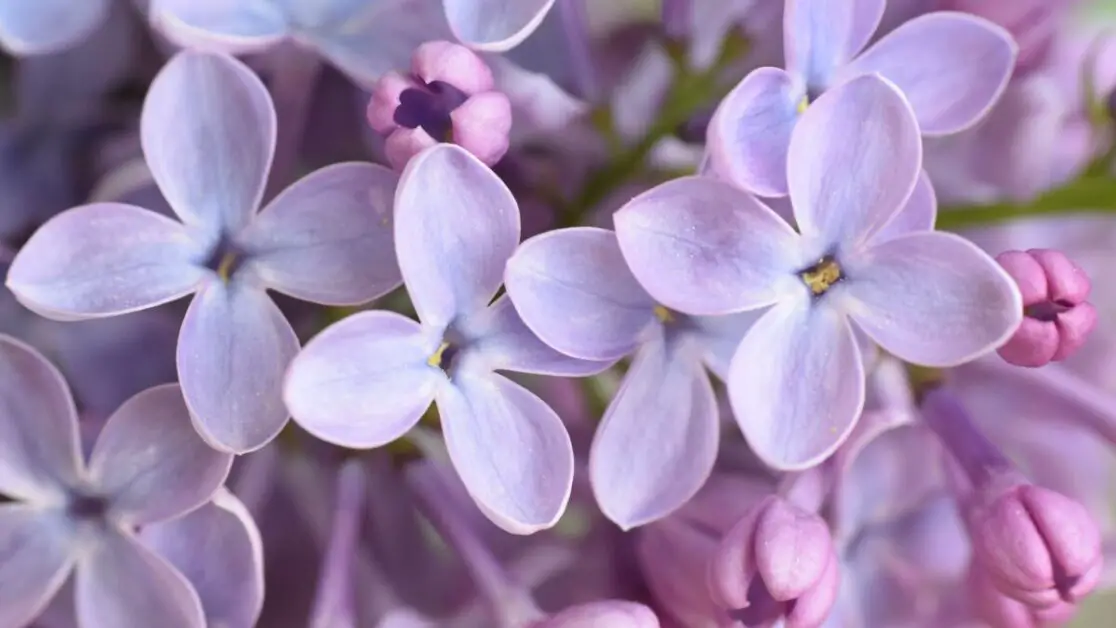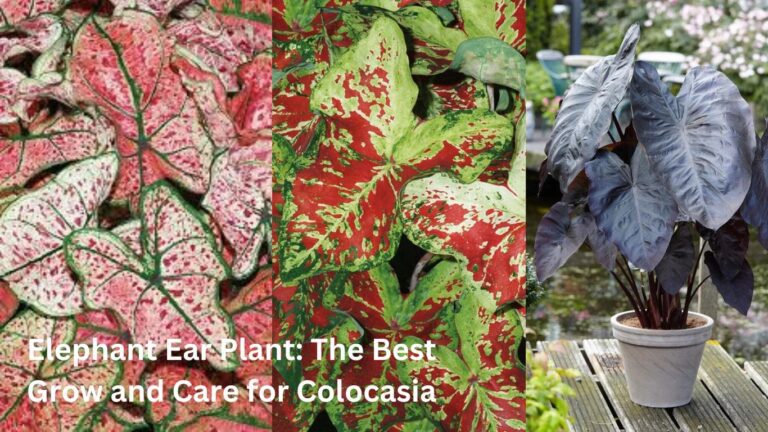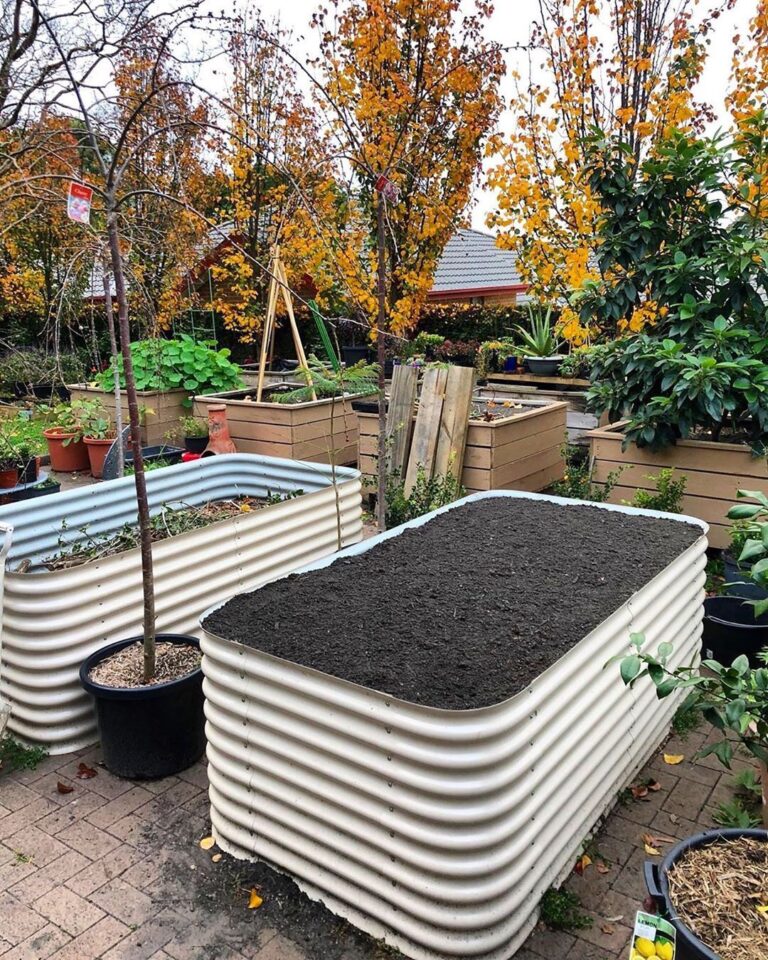Lilac Cultivation: Fragrant Blooms in Your Garden
Benefits of Growing Lilacs in Your Garden
Lilacs are not only beautiful additions to any garden, but they also offer a plethora of benefits to gardening enthusiasts. One of the main advantages of growing lilacs is their enchanting fragrance that fills the air with a sweet and soothing aroma, creating a tranquil and inviting atmosphere in your outdoor space. Additionally, lilacs attract pollinators such as butterflies and bees, contributing to the biodiversity of your garden and promoting a healthy ecosystem. By planting lilacs, you can enjoy the sight of these vibrant blossoms and the melodic buzz of pollinators, enhancing the overall aesthetic appeal of your garden.
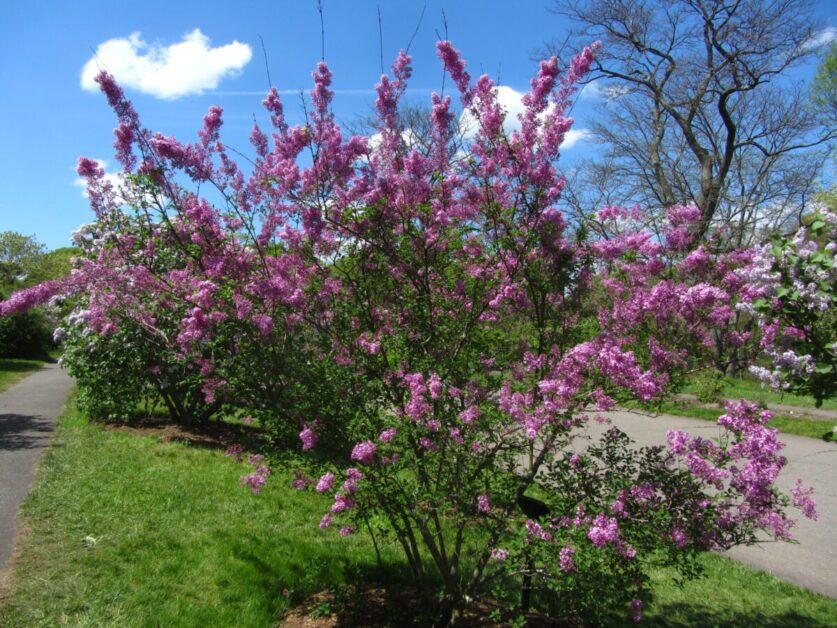
Moreover, lilacs are relatively low-maintenance plants that require minimal care once established, making them a hassle-free addition to your garden. These hardy shrubs are resilient to various weather conditions and are known for their longevity, providing years of vibrant blooms with minimal effort. With their stunning flowers and easy upkeep, lilacs offer a cost-effective way to enhance the beauty of your garden and create a serene outdoor retreat where you can relax and unwind amidst nature’s splendor.
Ideal Growing Conditions for Lilacs
Lilacs are beloved for their fragrant blooms and vibrant colors, but to ensure they thrive in your garden, it’s crucial to provide them with the ideal growing conditions. These plants prefer a sunny location with well-drained soil that is slightly alkaline. Adequate sunlight is essential for prolific blooming, so aim for at least six hours of direct sunlight daily. Additionally, lilacs require good air circulation to prevent fungal diseases, so avoid planting them in overly crowded areas.
When it comes to soil, lilacs prefer fertile, loamy soil with good drainage. They do not thrive in waterlogged or compacted soil, so ensure proper soil preparation before planting. Adding organic matter such as compost can improve soil structure and fertility, providing a favorable environment for lilacs to grow. It’s also important to maintain consistent soil moisture levels, as fluctuations in water availability can stress the plants and affect blooming. By meeting these ideal growing conditions, you can enjoy healthy, vibrant lilac plants in your garden.
Different Varieties of Lilacs to Consider
Lilacs are beloved for their stunning blooms and delightful fragrance, making them a popular choice for gardeners looking to add beauty and charm to their outdoor space. When considering different varieties of lilacs to plant in your garden, there are several options to choose from, each with its own unique characteristics and blooming patterns.
One classic variety is the Syringa vulgaris, commonly known as the Common Lilac. This variety is prized for its fragrant, purple flowers that bloom in late spring to early summer. Another popular choice is the Syringa oblata, also known as the Early Lilac, which features pale pink to lavender blossoms that emerge in early spring. For those seeking a more compact lilac variety, the Syringa meyeri, or Meyer Lilac, is an excellent option with its dense clusters of pink or purple flowers. Each of these lilac varieties offers a beautiful addition to any garden, providing color, fragrance, and a touch of elegance.
Tips for Planting Lilacs in Your Garden
When planting lilacs in your garden, it is crucial to select a site with well-draining soil and full sunlight. Lilacs thrive in fertile soil that is slightly alkaline, so consider adding organic matter like compost to enhance soil quality. Before planting, ensure the soil is free of weeds and debris to give the lilac roots the best start.
Dig a hole twice as wide as the root ball and at the same depth as the container the lilac came in. Gently loosen the roots before placing the plant in the hole, making sure it sits level with the surrounding soil. Fill in the hole with soil, patting it down gently to remove air pockets. Water the newly planted lilac thoroughly to help settle the soil around the roots and provide essential moisture for initial growth.
Here are some tips for lilacs cultivation in the garden:
| Tip | Description |
|---|---|
| Ideal Location | Plant lilacs in a sunny spot with well-drained, alkaline soil and good air circulation. Ensure they receive at least six hours of sunlight daily. |
| Planting Depth | Dig a hole twice the width of the root ball, ensuring the top of the root ball is level with the soil surface. Backfill and water thoroughly. |
| Mulch for Moisture | Apply 2-3 inches of organic mulch around the base, keeping it a few inches away from the stem. This helps retain moisture, suppress weeds, and regulate soil temperature. |
| Pruning and Deadheading | Prune immediately after flowering, removing spent blooms and any dead or damaged wood. Thin out crowded branches for better air circulation. |
| Fertilization | Apply balanced fertilizer in early spring and water thoroughly afterward. Avoid high-nitrogen fertilizers. |
| Watering | Keep lilacs consistently moist, watering deeply at the base. Avoid overhead watering to prevent fungal diseases. |
| Pest and Disease Management | Monitor for pests and diseases, treating infestations promptly with insecticidal soap or horticultural oil. Remove infected plant parts and practice good sanitation. |
| Support for Heavy Blooms | Provide support for heavy flower clusters, especially on young plants, using stakes or gentle ties. |
| Regular Inspection | Regularly inspect for signs of stress, disease, or pest infestation, and address issues promptly. Consider seeking local gardening advice for specific care tips. |
Caring for Your Lilac Plants Throughout the Year
Ensure your lilac plants thrive throughout the year by following these essential tips. In spring, after the last frost, focus on fertilizing your lilacs with a balanced fertilizer to support healthy growth and vibrant blooms. Water deeply but infrequently, allowing the soil to dry out slightly between waterings to prevent root rot. Regularly monitor for any signs of pests or diseases, and address them promptly to maintain the health of your lilac plants.
During the summer months, continue to water your lilacs deeply but less frequently to encourage deep root growth. Mulch around the base of the plants to retain moisture and suppress weeds. Deadhead spent blooms to promote new flower bud formation. Keep an eye out for any signs of stress such as wilting or yellowing leaves, which may indicate a need for more water or potential nutrient deficiencies. Stay vigilant against common pests like aphids or powdery mildew, taking appropriate measures to keep your lilacs thriving throughout the summer season.
Pruning Techniques for Healthy Lilac Growth
Pruning is an essential practice for ensuring healthy growth and abundant blooms in your lilac plants. Proper pruning techniques help to maintain the shape of the shrub, promote better air circulation, and encourage the development of strong new growth. When pruning your lilacs, it is important to remove any dead or diseased wood, as well as any crossing branches that may be causing congestion within the plant. By selectively pruning branches, you can also help stimulate the production of new flowering wood for the following season.
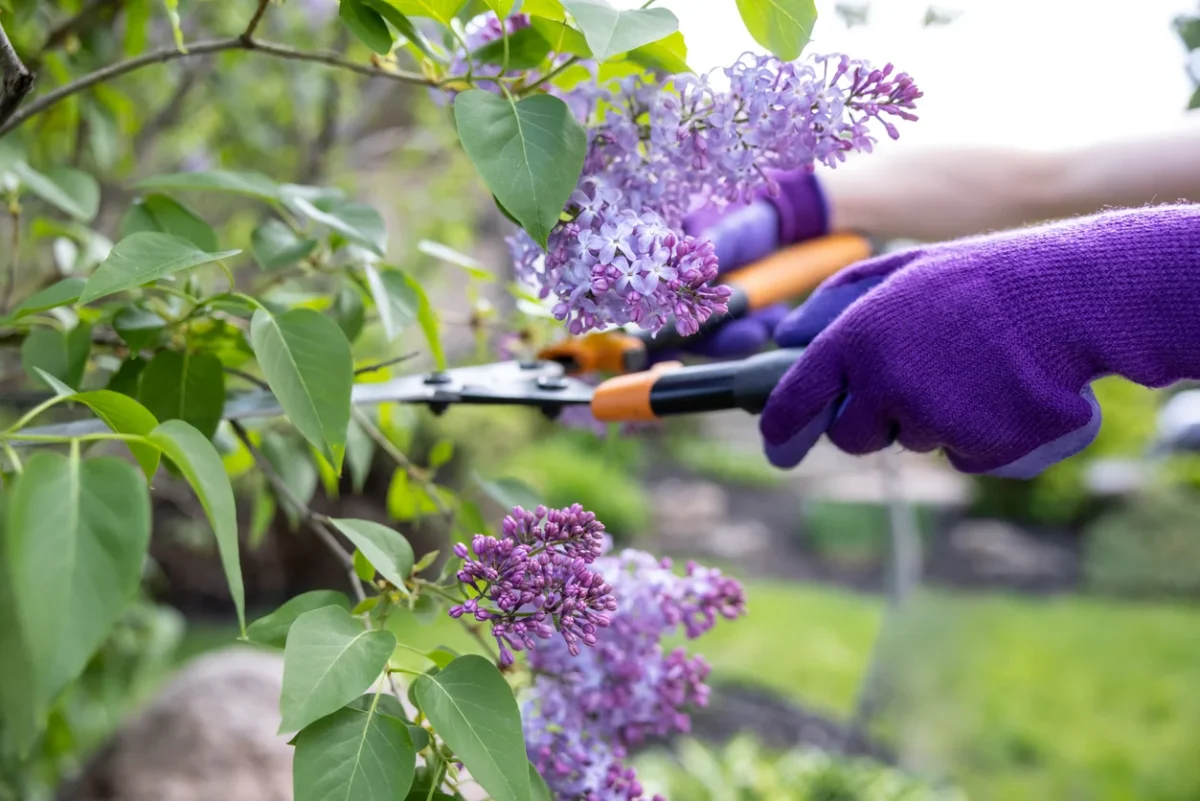
Timing is crucial when it comes to pruning lilacs for optimal growth. The best time to prune your lilacs is immediately after they have finished flowering. This allows the plant to recover and channel its energy into producing new growth before the onset of winter dormancy. Avoid heavy pruning in late summer or fall, as this can reduce the number of blooms in the following spring. By following these pruning techniques and timing guidelines, you can help your lilac plants thrive and delight you with their beautiful and fragrant blooms year after year.
Common Pests and Diseases to Watch Out for
When cultivating lilacs in your garden, it’s essential to be vigilant against common pests and diseases that can affect these beautiful flowering shrubs. One of the most prevalent issues to watch out for is powdery mildew, a fungal disease that appears as a white powdery substance on the leaves, stems, and flower buds of lilac plants. To combat powdery mildew, ensure proper air circulation around the plants, avoid overhead watering, and promptly remove any infected foliage to prevent its spread.
Another common pest that may target lilac bushes is the lilac borer, a destructive insect that burrows into the stems and can cause significant damage if left unchecked. Signs of lilac borer infestation include wilting or dying branches, sawdust-like frass near entry holes, and browning of the inner bark. To manage lilac borers, prune and destroy affected branches, maintain plant health through proper watering and fertilization, and consider using insecticidal treatments if necessary. Stay vigilant for these pests and diseases to keep your lilac garden flourishing and vibrant.
The list of common pests and diseasea of Lilac is given below:
| Pest / Disease | Description |
|---|---|
| Aphids | Small, soft-bodied insects that feed on plant sap, causing distorted growth, yellowing leaves, and the secretion of sticky honeydew. |
| Scale Insects | Tiny, immobile pests that attach to stems and leaves, sucking sap from the plant and causing yellowing, wilting, and stunted growth. |
| Whiteflies | Small, flying insects that congregate on the undersides of leaves and feed on sap, causing leaf yellowing, wilting, and the transmission of viral diseases. |
| Caterpillars | Larval stage of moths and butterflies that chew on foliage, causing irregular holes, skeletonized leaves, and defoliation, especially in the case of heavy infestations. |
| Powdery Mildew | Fungal disease characterized by white, powdery growth on the surfaces of leaves and stems, leading to leaf distortion, yellowing, and premature leaf drop. |
| Botrytis Blight | Fungal disease that causes grayish-brown lesions on plant tissues, often in cool, humid conditions. Symptoms include wilting, browning of flowers and leaves, and the development of fuzzy gray mold on affected areas. |
| Leaf Spot | Fungal or bacterial infection resulting in circular or irregular spots on leaves, ranging from brown to black in color. Severe infections can cause defoliation and weaken the plant. |
| Root Rot | Fungal disease that affects the roots, leading to rotting, discoloration, and reduced root function. Symptoms include wilting, yellowing foliage, and stunted growth. Root rot is often caused by overwatering or poorly drained soil. |
| Verticillium Wilt | Soilborne fungal disease that affects the vascular system, causing wilting, yellowing, and ultimately death of affected plants. Infected plants may exhibit stunted growth and dieback of branches. |
How to Propagate Lilacs for More Blooms
Propagation of lilacs can be a rewarding way to expand the beauty and fragrance of these beloved flowering shrubs in your garden. One common method of propagating lilacs is through hardwood cuttings taken in late autumn or early winter. Select healthy, disease-free branches that are about pencil-thick in diameter and cut them into 6 to 8-inch segments. Remove the lower leaves, dip the cut end in rooting hormone, and plant the cuttings in a well-draining medium like sand or perlite. Keep the cuttings consistently moist and in a cool, shaded area until roots develop, usually in a few months.
Another effective way to propagate lilacs is through division. This method involves separating the root ball of an established lilac plant into smaller sections, each with its own root system and stems. This can be done in early spring before new growth begins or in autumn after flowering. Dig up the plant carefully, divide the root ball using a sharp knife or shovel, and replant the divisions in prepared soil with adequate spacing. Water thoroughly and monitor the newly divided lilacs for signs of stress as they establish themselves in their new locations.
Creative Ways to Use Lilacs in Your Garden Design
Lilacs can be a versatile and delightful addition to your garden design, bringing not only bursts of color but also a range of creative possibilities. One way to use lilacs creatively is by planting them in clusters along pathways or borders, creating a charming fragrant pathway for you and your guests to enjoy. The vibrant hues and sweet scent of lilacs will add a soothing ambiance to your outdoor space, making it a perfect spot for relaxation and peaceful strolls. Additionally, you can incorporate lilacs into your garden design by mixing them with other blooming shrubs or perennials to create visually appealing and harmonious flower beds.
Another creative way to use lilacs in your garden design is by planting them near windows or outdoor seating areas to enjoy their fragrant blooms up close. The mesmerizing aroma of lilacs wafting through the air can enhance your outdoor experience, creating a tranquil and picturesque setting for unwinding after a long day. Consider planting different varieties of lilacs with varying bloom times to ensure a continuous display of colors and scents throughout the growing season, allowing you to relish the beauty of lilacs for an extended period. By strategically placing lilacs in key areas of your garden, you can transform it into a sanctuary filled with nature’s beauty and fragrance.
Harvesting and Preserving Lilac Blooms for Indoor Display
To ensure your indoor display of lilac blooms looks fresh and vibrant, it’s essential to harvest them at the right time. The best time to pick lilac blooms is in the morning when the flowers are at their peak freshness. Choose blooms that have just opened fully but are not yet wilting. Cut the stems at an angle and place them immediately in a bucket of water to prevent air bubbles from entering the stem, which can block water uptake.
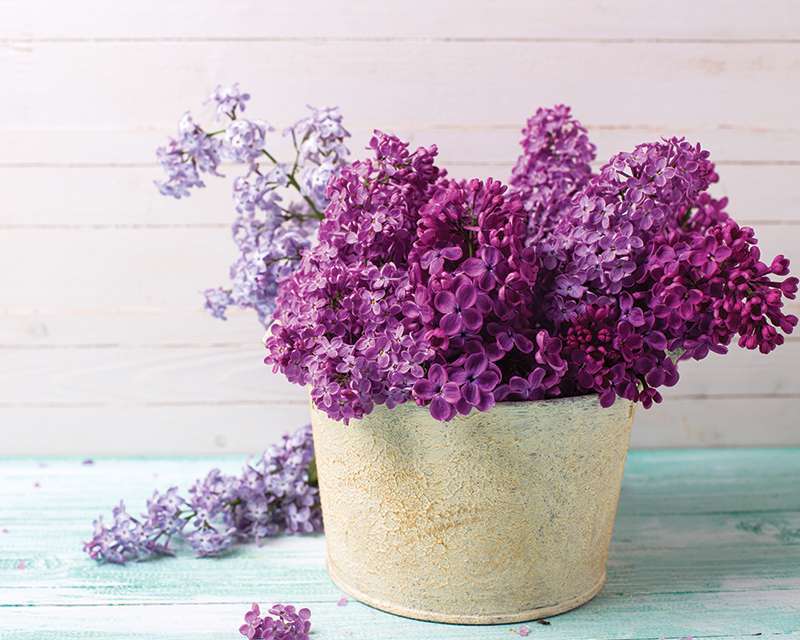
Preserving lilac blooms for indoor display can help extend their beauty and fragrance. One popular method is to use a floral preservative solution in the vase water to nourish the blooms and inhibit bacterial growth. Change the water every few days and recut the stems to ensure proper hydration. Alternatively, you can dry lilac blooms by hanging them upside down in a dark, well-ventilated area. Once dried, you can use them in potpourri, sachets, or other crafts to enjoy their fragrance year-round.
Lilac Companion Plants for a Beautiful Garden
When planning your garden layout, consider pairing your vibrant lilac bushes with complementary companion plants to enhance the overall beauty of your outdoor space. A lovely combination to consider is planting daylilies alongside your lilacs. Daylilies offer a range of hues that can complement the various shades of lilac blooms, creating a visually stunning display in your garden. Additionally, their sturdy foliage provides a striking contrast to the delicate clusters of lilac flowers, adding depth and texture to your landscape.
Another fantastic companion plant for lilacs is the perennial salvia. With its tall, spiky blooms in shades of purple, blue, or white, salvia can serve as an excellent backdrop to the more voluminous lilac blossoms. This combination not only adds visual interest but also attracts pollinators like bees and butterflies to your garden, promoting biodiversity and ecosystem health. By strategically interplanting lilacs with salvia, you can create a dynamic and flourishing garden that delights the senses with its colors and scents.
Understanding the Fragrance of Lilacs
Lilacs are renowned for their enchanting fragrance that fills the air with a sweet and floral aroma. This delightful scent is primarily composed of a combination of compounds known as monoterpenes, which are organic molecules found in various floral scents. Additionally, lilac blooms contain benzyl acetate, a compound responsible for the distinct sweetness in their fragrance profile. These aromatic molecules are released from the flowers’ petals and attract pollinators like bees and butterflies, enhancing the garden’s allure and biodiversity.
The intensity and complexity of a lilac’s fragrance can vary not only between different lilac cultivars but also throughout the day. Factors such as temperature, humidity, and sunlight exposure can influence the release and dispersal of these aromatic compounds, creating an ever-changing olfactory experience for garden enthusiasts. Understanding the science behind the fragrance of lilacs adds a fascinating dimension to appreciating these beloved garden blooms, inviting us to savor the intricate chemistry and natural wonders of our botanical companions.
History and Symbolism of Lilacs in Gardens
Lilacs have a rich history dating back to ancient Greek mythology, where they were said to have originated from the tears of the god Pan. Throughout the centuries, lilacs have been revered for their beauty and intoxicating fragrance, making them popular choices for gardens and bouquets. The symbolism of lilacs varies across cultures and time periods, with meanings ranging from love and rebirth to mourning and nostalgia. In Victorian times, giving a bouquet of lilacs was a way to convey the first emotions of love, while in Eastern cultures, lilacs are often associated with purity and renewal. Understanding the historical and symbolic significance of lilacs can deepen our appreciation for these stunning flowers in our gardens.
In addition to their historical significance, lilacs hold special symbolism in various cultural contexts. In the language of flowers, known as floriography, lilacs are often associated with the emotions of first love and youthful innocence. In many European countries, lilacs are a symbol of Easter and the resurrection, representing hope and new beginnings. Furthermore, lilacs have been featured in literature and art as symbols of beauty, grace, and fleeting moments of joy. By incorporating lilacs into our gardens, we not only add a touch of elegance and fragrance but also pay homage to the rich history and symbolism that these blooms carry.
Celebrating Lilacs in Festivals and Events
Lilac festivals and events are popular occasions that celebrate the beauty and fragrance of these stunning flowers. These gatherings often showcase a wide variety of lilac cultivars, allowing visitors to marvel at the different colors and scents. It’s a wonderful opportunity for gardening enthusiasts to learn more about the cultivation and care of lilacs from experts and fellow enthusiasts alike.
During lilac festivals, visitors can participate in various activities such as lilac-themed art exhibitions, garden tours featuring lilac blooms, and workshops on growing and maintaining these exquisite plants. These events not only inspire a love for lilacs but also offer a platform for individuals to share their knowledge and experiences with others who appreciate the charm of these beloved flowers.
By watching this video you can learn about Lilac cultivation.
Resources for Further Learning about Lilac Cultivation
For those eager to delve deeper into the captivating world of lilac cultivation, there are various resources available to expand your knowledge and expertise. Online platforms like the Lilac Society of America provide a wealth of information on lilac varieties, cultivation techniques, and care tips. Their website offers a comprehensive database of articles, guides, and forums where enthusiasts can exchange ideas and seek advice from experienced growers.
Another valuable resource for those keen on delving into lilac cultivation is the American Horticultural Society’s website, which features a plethora of articles, books, and webinars on gardening, including specific guides on growing and caring for lilacs. The society’s emphasis on education and research makes it a trusted source for reliable and up-to-date information on all things related to horticulture. Additionally, local botanical gardens, nurseries, and agricultural extension offices often offer workshops and seminars on lilac cultivation, providing hands-on learning experiences for aspiring gardeners.
Can I grow lilacs indoors?
Lilacs are best grown outdoors in full sun and well-drained soil. They require a period of winter dormancy in order to bloom properly.
Are there any special fertilizers I should use for lilacs?
Lilacs generally do not require heavy fertilization. A balanced fertilizer in the spring is usually sufficient. Avoid high nitrogen fertilizers, as they can lead to excessive leaf growth at the expense of flowers.
How long do lilac bushes typically live?
With proper care, lilac bushes can live for decades. Some varieties have been known to survive for over 100 years.
Can I grow lilacs in containers?
While it is possible to grow lilacs in containers, they may not thrive as well as when planted in the ground. Make sure the container is large enough to accommodate the root system and provide proper drainage.
Are there any specific pruning techniques for dwarf lilac varieties?
Dwarf lilacs may require less pruning than standard varieties, but it is still important to remove dead or diseased wood and shape the plant for optimal growth. Consult specific care guidelines for the dwarf variety you are growing.
Can I use lilac blooms for culinary purposes?
Lilac blooms are edible and can be used to infuse flavor in syrups, jams, and baked goods. However, make sure to only use blooms from plants that have not been treated with pesticides.

